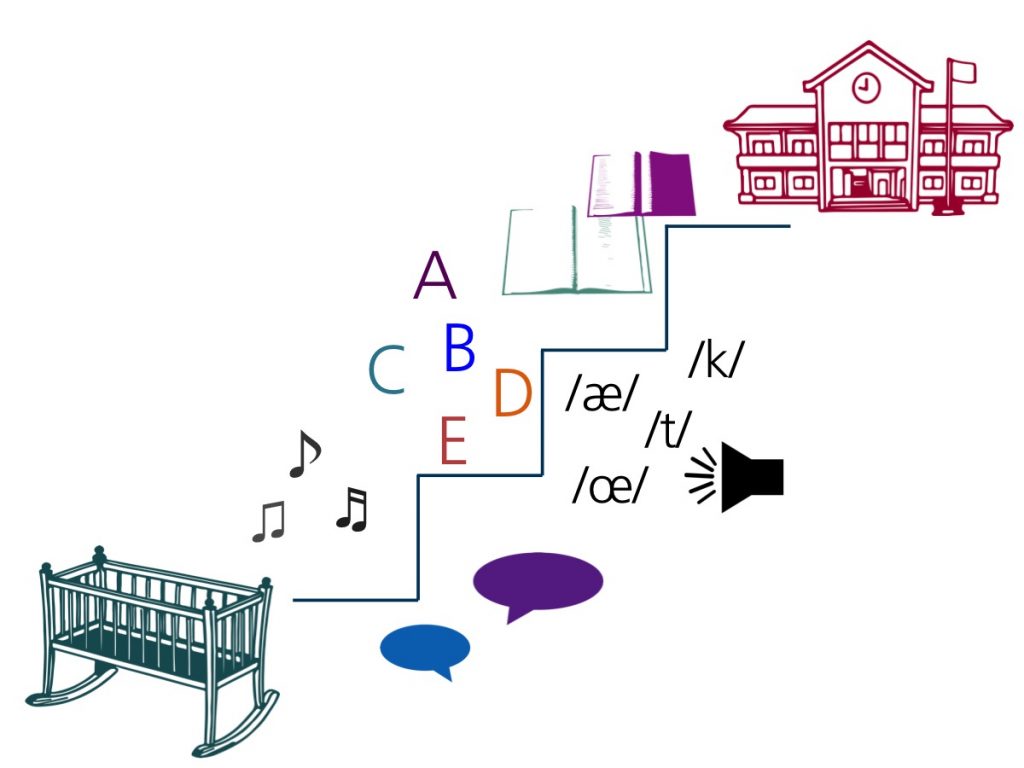
The process of learning to read does not begin when a child enters kindergarten. Instead, the foundation of literacy begins developing at birth. A sequence of developmental milestones unfolds for five years before formal reading instruction begins. This process plays an important role in setting the stage to learn to read.
Each child brings a unique combination of pre-literacy skills when they enter kindergarten. A child’s genetics, language experience, speech, vocabulary, and phonological awareness all contribute to their pre-literacy skills. Rich exposure to books and reading also matter. It is these attributes, skills, and experiences that lay the groundwork for learning to read.
-
- Auditory
- related to hearing
- Genes
- the inherited biological ‘recipe’ for appearance and other individual characteristics
- Literacy
- the ability to read and write
- Neurons
- cells located in the brain and throughout the body that are specialized to communicate messages
- Phoneme
- the smallest unit of speech (a sound)
- Phoneme “play”
- manipulating sounds that make up words
- Phonological awareness
- the ability to identify and manipulate individual sounds in spoken language
- Primary visual cortex
- an area in the brain responsible for interpreting visual information
- Retina
- neural cells at the back of the eye that are sensitive to light
- Skilled reader
- a reader who is able to focus on comprehension, rather than on sounding out words
- Visual word form area
- the area of the brain responsible for recognizing words during reading